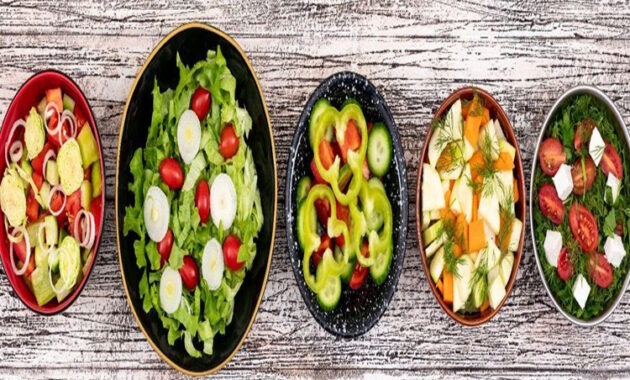Creating a personalized meal plan is a transformative step towards achieving optimal health and well-being. By tailoring your diet to meet your unique nutritional needs, preferences, and health goals, you can not only improve your overall health but also enjoy a more satisfying and sustainable eating experience. This article will guide you through the essential steps of crafting a meal plan that aligns with your individual requirements, from understanding your nutritional needs to practical tips for meal preparation. Whether you aim to enhance your energy levels, manage weight, or support specific health goals, a well-designed meal plan can be a powerful tool in your journey toward better health.

Understanding Your Nutritional Needs
Assessing Your Dietary Requirements
Understanding your nutritional needs is the foundation of creating an effective personalized meal plan. Start by evaluating your overall health, activity level, and specific dietary goalsDifferent individuals have unique nutritional requirements depending on their age, gender, weight, height, and activity level. For instance, athletes may need higher protein intake for muscle repair, while someone managing a chronic condition might need to monitor their intake of certain nutrients more closely.
Identifying Macronutrient and Micronutrient Needs
Once you have a grasp of your dietary requirements, it’s crucial to understand the balance of macronutrients and micronutrients needed. Macronutrients include carbohydrates, proteins, and fats, which provide energy and support bodily functions. Micronutrients, such as vitamins and minerals, are essential for various biochemical processes and overall health. Aim for a balanced intake of these nutrients by incorporating a variety of foods.
Tailoring to Specific Health Goals
Personalizing your meal plan involves aligning your nutritional intake with your specific health goals. Whether you aim to lose weight, gain muscle, or manage a health condition like diabetes, adjusting your diet accordingly is crucial. For weight loss, focus on creating a calorie deficit while maintaining nutrient density. For muscle gain, increase your protein intake and incorporate strength training.
Creating Your Meal Plan
Setting Your Goals and Preferences
The initial step in developing a personalized meal plan is to determine your objectives and preferences. Determine what you want to achieve with your meal plan, whether it’s weight loss, muscle gain, improved energy levels, or managing a health condition. Consider your food preferences, allergies, and dietary restrictions to ensure the meal plan is enjoyable and sustainable.
Designing Balanced Meals
A well-structured meal plan should include balanced meals that meet your nutritional needs. Each meal should ideally contain a mix of macronutrients: carbohydrates, proteins, and fats, as well as essential micronutrients. For example, a balanced breakfast might include whole grains (carbohydrates), eggs or Greek yogurt (protein), and avocado (healthy fats). Incorporate a variety of foods to ensure you get a broad range of nutrients.
Planning Your Weekly Menu
Creating a weekly menu helps streamline your meal preparation and shopping process. Outline what you will eat each day, including breakfast, lunch, dinner, and snacks. Ensure that your menu includes a variety of foods to keep meals interesting and prevent nutritional gaps. It’s also helpful to prepare meals in advance or use batch cooking techniques to save time during the week.
Practical Tips for Meal Planning
Start with a Plan
involves creating a menu for the upcoming days, deciding what dishes you will prepare, and listing the ingredients you’ll need. Consider including a variety of proteins, vegetables, fruits, and whole grains to ensure a balanced diet.
Batch Cooking and Meal Prep
Batch cooking and meal prepping are effective strategies for saving time and ensuring you always have healthy options available. Prepare larger quantities of staple foods, such as grilled chicken, roasted vegetables, or quinoa, which can be stored in the refrigerator or freezer for use throughout the week.
Use a Shopping List
Create a detailed shopping list based on your meal plan to ensure you buy everything you need and avoid impulse purchases. Organize your list by category (produce, dairy, grains, etc.) to make your shopping trip more efficient.
Adapting and Adjusting Your Plan
Monitor Your Progress
Regularly assess how well your meal plan is aligning with your health goals and daily needs. Track any changes in your energy levels, weight, or overall well-being to determine if adjustments are needed. If you notice that you’re not meeting your nutritional targets or that your plan is too rigid, consider modifying it to better suit your lifestyle and preferences.
Be Flexible with Ingredients
Sometimes, you might find that certain ingredients are unavailable or that you’re not enjoying some of the meals as much as you anticipated. Be flexible and open to substituting ingredients based on what is in season, on sale, or what you have on hand. For instance, if a particular vegetable is not available, substitute it with another one of similar nutritional value.
Adjust Portion Sizes
If you find that you are consistently feeling hungry or overly full, it may be time to reassess your portion sizes. Personalized Adjust the quantity of food you prepare or consume to better align with your appetite and nutritional needs. Ensuring that portion sizes match your activity level and health goals helps in maintaining balanced energy levels and avoiding overeating or undereating Personalized .